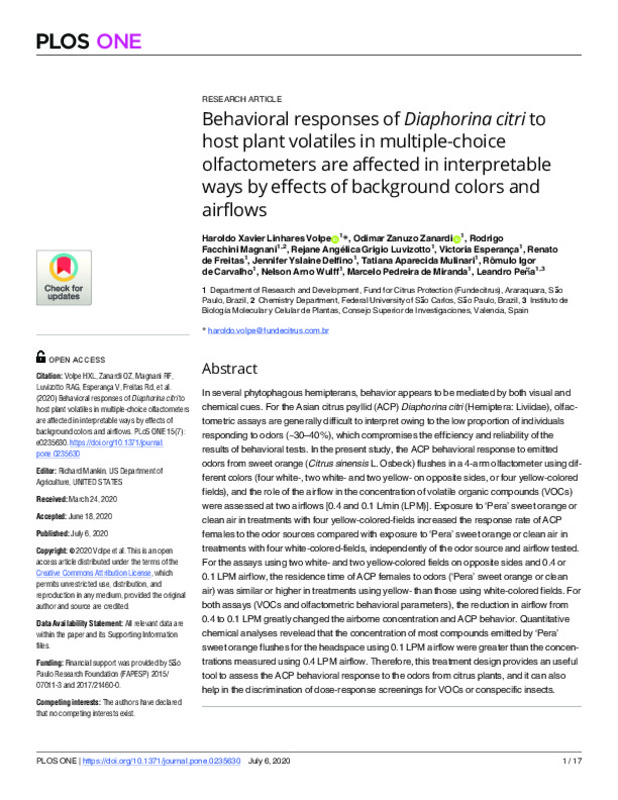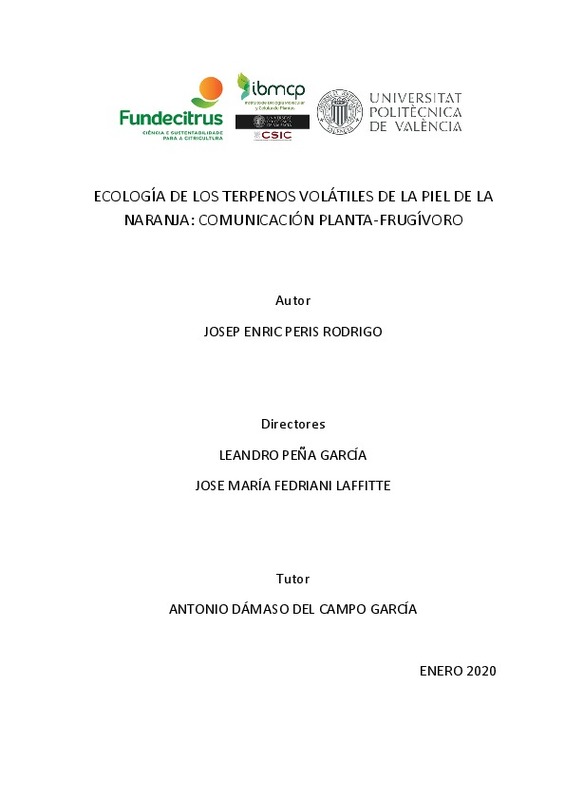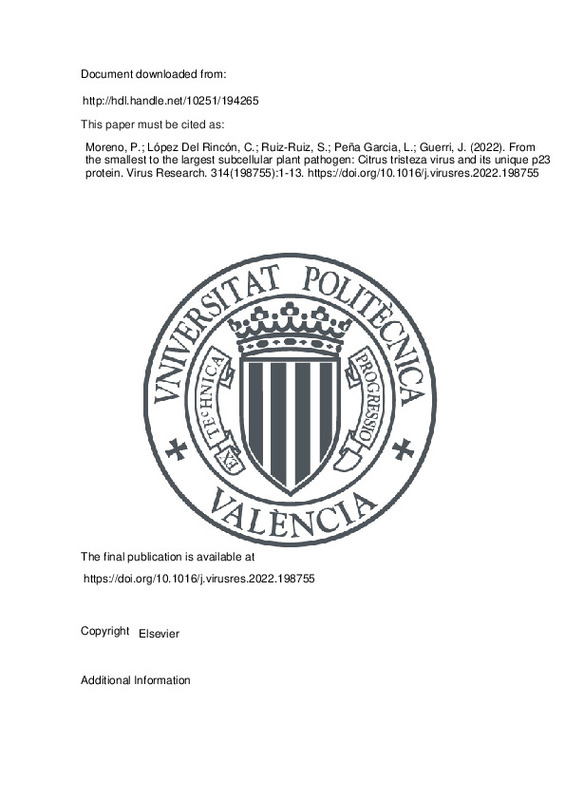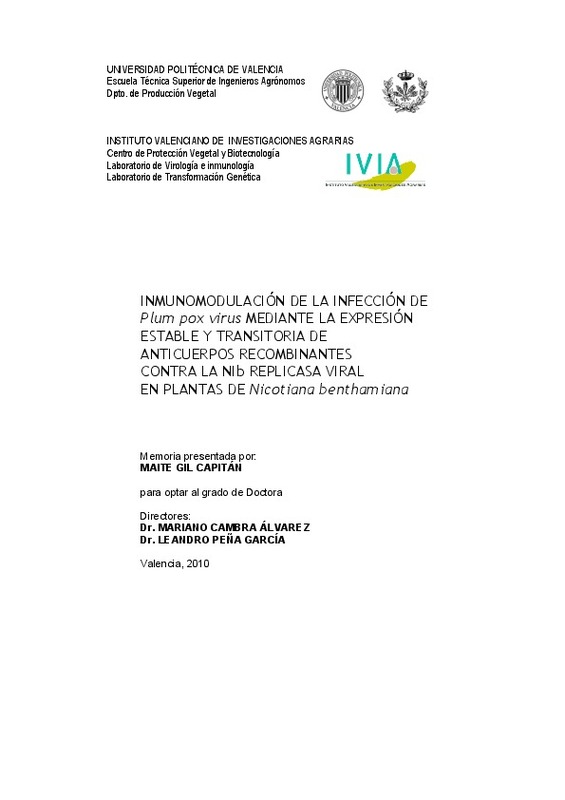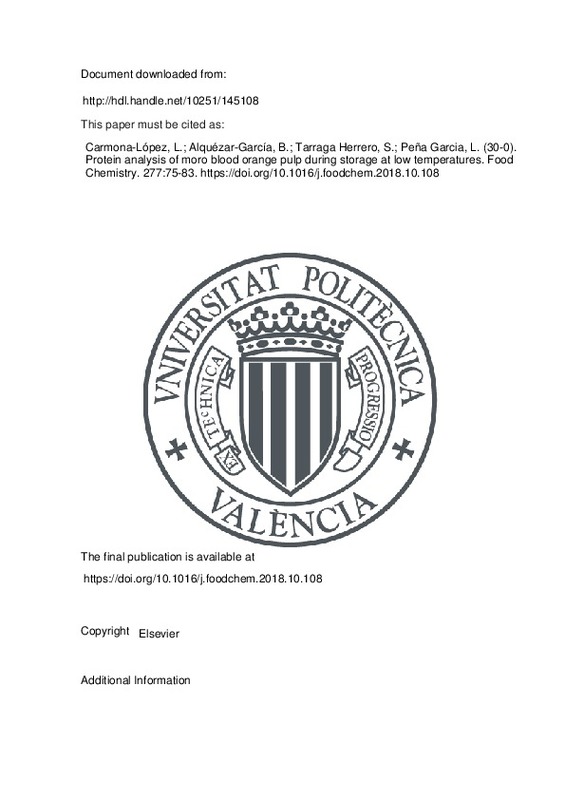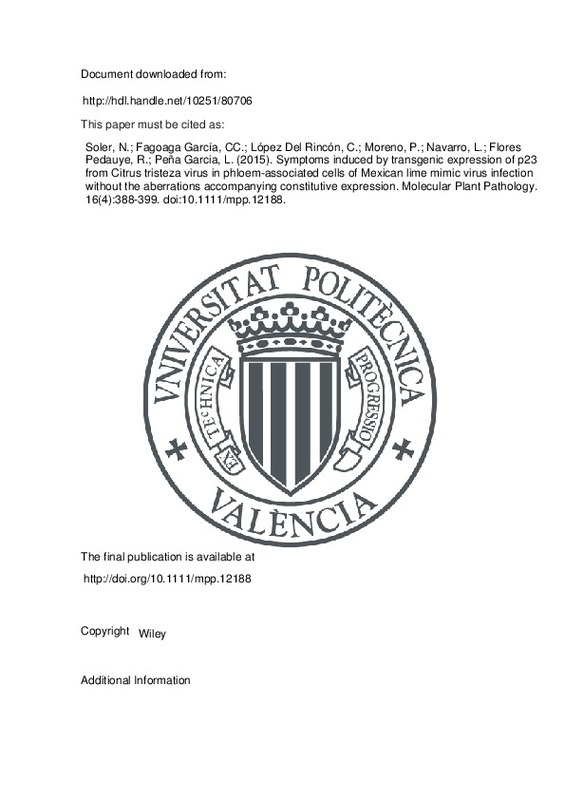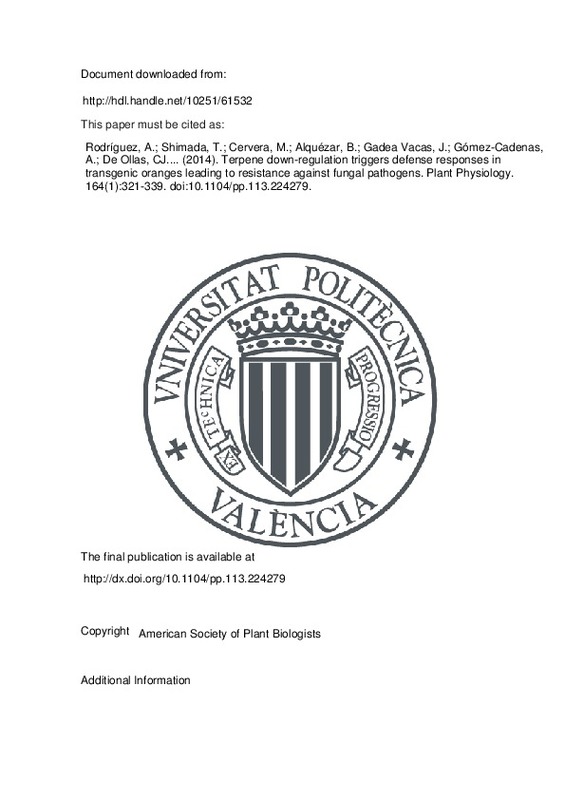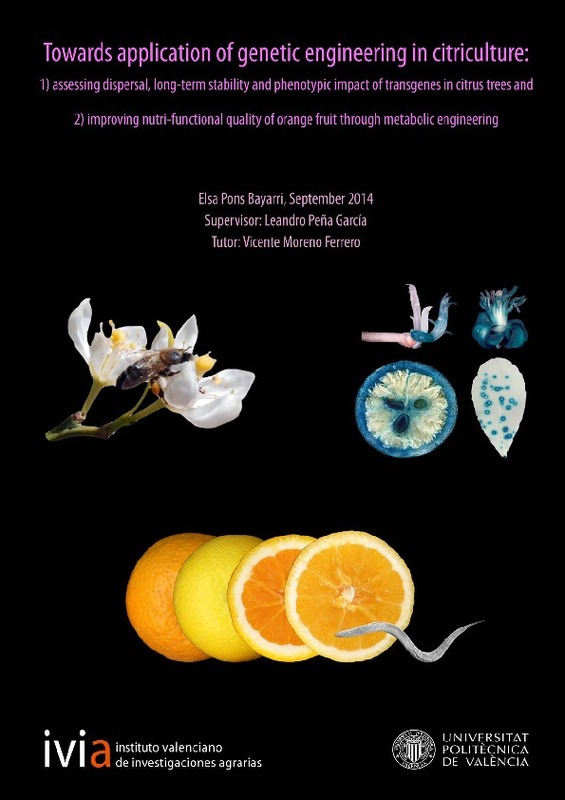

Listar por autor "Peña García, Leandro Antonio"
RiuNet: Repositorio Institucional de la Universidad Politécnica de Valencia
- RiuNet repositorio UPV
- :
- Listar por autor
JavaScript is disabled for your browser. Some features of this site may not work without it.
Buscar en RiuNet
Listar
Mi cuenta
Ayuda RiuNet
Admin. UPV
Listar por autor "Peña García, Leandro Antonio"
Mostrando ítems 1-20 de 22
-
Volpe, H.X.L.; Zanardi, O.Z.; Magnani, R.F.; Luvizotto, R.A.G.; Esperança, V.; de Freitas, R.; Delfino, J.Y.; Mulinari, T.A.; Carvalho, R.I.; Wulff, N.A.; de Miranda, M.P.; PEÑA GARCIA, LEANDRO (Public Library of Science, 2020-07-06)[EN] In several phytophagous hemipterans, behavior appears to be mediated by both visual and chemical cues. For the Asian citrus psyllid (ACP)Diaphorina citri(Hemiptera: Liviidae), olfactometric assays are generally difficult ...
-
Carmona-López, Lourdes; Alquézar-García, Berta; PEÑA GARCIA, LEANDRO (MDPI, 2024-08)[EN] Carotenoid-rich foods such as citrus fruits have a wide range of functions in human health. They primarily exert antioxidant effects, but individual carotenoids may also act through other health-promoting mechanisms ...
-
Ruiz Ruiz, Susana; Soler, Nuria; Sanchez Navarro, Jesus Angel; Fagoaga, Carmen; López Del Rincón, Carmelo; Navarro Lucas, Luis; Moreno, Pedro; PEÑA GARCIA, LEANDRO; Flores Pedauye, Ricardo (American Phytopathological Society, 2013-03)Citrus tristeza virus (CTV) encodes a singular protein (p23, 209 amino acids) with multiple functions, including RNA silencing suppression (RSS). Confocal laser-scanning microscopy of green fluorescent protein (GFP)-p23 ...
-
Ruiz-Ruiz, Susana; Navarro, Beatriz; PEÑA GARCIA, LEANDRO; Navarro, Luis; Moreno, Pedro; Di Serio, Francesco; FLORES PEDAUYE, RICARDO (Springer, 2019)[EN] To dissect the host RNA silencing response incited by citrus tristeza virus (CTV, genus Closterovirus), a (+) ssRNA of similar to 19300 nt, and the counter reaction deployed by the virus via its three RNA silencing ...
-
Carmona, Lourdes; Alquézar-García, Berta; Diretto, Gianfranco; Sevi, Filippo; Malara, Tatiane; Lafuente, M. Teresa; PEÑA GARCIA, LEANDRO (Elsevier, 2021-04-16)[EN] Anthocyanins are pigments present in blood oranges which can be enriched by post-harvest cold storage. Additionally, citrus fruits contain appreciable levels of other flavonoids, whose content increases under postharvest ...
-
Atkins, Elliott; Scialò, Emanuele; Catalano, Chiara; Caballero Hernández, Carmen; Wegel, Eva; Hill, Lionel; Licciardello, Concetta; PEÑA GARCIA, LEANDRO; Garcia-Lor, Andres; Martin, Cathie; Butelli, Eugenio (Elsevier (Cell Press), 2024-10-18)[EN] The distinctive acidity of citrus fruit is determined by a regulatory complex of MYB and bHLH transcription factors together with a WDR protein (MBW complex) which operates in the unique juice vesicles of the fruit. ...
-
Peris Rodrigo, Josep Enric (Universitat Politècnica de València, 2020-01-24)[ES] Ecología de los terpenos volátiles de la piel de la naranja: comunicación planta-frugívoro Desde hace décadas muchos autores han investigado cómo a lo largo de la evolución, los frugívoros han configurado la forma, ...
-
Fagoaga García, Carmen; Pensabene Bellavia, Giovanni; Moreno, Pedro; Navarro, Luis; Flores Pedauye, Ricardo; PEÑA GARCIA, LEANDRO (Wiley, 2011-12)[EN] Citrus tristeza virus (CTV), a phloem-restricted closterovirus infecting citrus, encodes three different silencing suppressors (p25, p20 and p23), one of which (p23) is a pathogenicity determinant that induces aberrations ...
-
Carmona-López, Lourdes; Alquézar-García, Berta; Tarraga Herrero, Susana; PEÑA GARCIA, LEANDRO (International Society for Horticultural Science (ISHS), 2019-01)[EN] Anthocyanins are a subclass of flavonoid pigments with important therapeutic properties beneficial to human health. Blood oranges are rich in these pigments, which present synergistic effects (i.e., anti-inflammatory ...
-
Moreno, Pedro; López Del Rincón, Carmelo; Ruiz-Ruiz, Susana; PEÑA GARCIA, LEANDRO; Guerri, José (Elsevier, 2022-06)[EN] Knowledge on diseases caused by Citrus tristeza virus (CTV) has greatly increased in last decades after their etiology was demonstrated in the past seventies. Professor Ricardo Flores substantially contributed to these ...
-
Rodríguez Baixauli, Ana María (Universitat Politècnica de València, 2013-09-02)Los terpenos constituyen el mayor grupo de metabolitos secundarios, siendo componentes de las glándulas de aceites esenciales, de las flores y de las resinas defensivas de plantas aromáticas, a los que proporcionan sus ...
-
Gil Capitán, María Teresa (Universitat Politècnica de València, 2013-12-02)Plum pox virus (PPV) es miembro del género Potyvirus, causa la enfermedad de la sharka que tiene un serio impacto agrícola y económico sobre el cultivo de frutales de hueso. Puesto que la utilización de variedades resistentes ...
-
Carmona-López, Lourdes; Alquézar-García, Berta; Tarraga Herrero, Susana; PEÑA GARCIA, LEANDRO (Elsevier, 2019-03-30)[EN] A protein analysis in the pulp of Moro blood oranges (Citrus sinensis L. Osbeck) at the onset and after 30 days of storage at either 4 or 9 degrees C was performed. All differential proteins belonged to different ...
-
Alves, Monica N.; Lopes, Silvio A.; Raiol-Junior, Laudecir L.; Wulff, Nelson A.; Girardi, Eduardo A.; Ollitrault, Patrick; PEÑA GARCIA, LEANDRO (Frontiers Media SA, 2021-01-08)[EN] Huanglongbing (HLB) is the most destructive, yet incurable disease of citrus. Finding sources of genetic resistance to HLB-associated 'Candidatus Liberibacter asiaticus' (Las) becomes strategic to warrant crop ...
-
Miranda, Marcelo P.; Fitches, Elaine C.; Sukiran, Nur Afiqah; Eduardo, Wellington I.; Garcia, Rafael B.; Jaciani, Fabrício J.; Readshaw, Jennifer J.; Bell, Jack; PEÑA GARCIA, LEANDRO (Elsevier, 2024-02-23)[EN] The Asian citrus psyllid, Diaphorina citri Kuwayama (Hemiptera: Psyllidae), is a key vector of the phloem -limited bacteria Candidatus Liberibacter asiaticus (CLas) associated with huanglongbing (HLB), the most serious ...
-
Soler, Nuria; Fagoaga García, Carmen Concepción; López Del Rincón, Carmelo; Moreno, Pedro; Navarro, Luis; Flores Pedauye, Ricardo; PEÑA GARCIA, LEANDRO (Wiley, 2015-05)[EN] Citrus tristeza virus (CTV) is phloem restricted in natural citrus hosts. The 23-kDa protein (p23) encoded by the virus is an RNA silencing suppressor and a pathogenicity determinant. The expression of p23, or its ...
-
Rodriguez, Ana; San Andrés Aura, Victoria; Cervera, Magdalena; Redondo, Ana; ALQUÉZAR, B; Shimada, Takehiko; Gadea Vacas, José; Rodrigo, Maria Jesús; ZACARIAS, Lorenzo; Palou, Lluis; Lopez, María M.; Catañera, Pedro; PEÑA GARCIA, LEANDRO (American Society of Plant Biologists, 2011-06)[EN] Plants use volatile terpene compounds as odor cues for communicating with the environment. Fleshy fruits are particularly rich in volatiles that deter herbivores and attract seed dispersal agents. We have investigated ...
-
Rodríguez, Ana; Shimada, Takehiko; Cervera, Magdalena; Alquézar, Berta; Gadea Vacas, José; Gómez-Cadenas, Aurelio; De Ollas, Carlos José; Rodrigo, María Jesús; Zacarías, Lorenzo; PEÑA GARCIA, LEANDRO (American Society of Plant Biologists, 2014-01)Terpenoid volatiles are isoprene compounds that are emitted by plants to communicate with the environment. In addition to their function in repelling herbivores and attracting carnivorous predators in green tissues, the ...
-
Rodríguez, Ana; San Andrés Aura, Victoria; Cervera, Magdalena; Redondo, Ana; Alquézar, Berta; Shimada, Takehiko; Gadea Vacas, José; Rodrigo, María; ZACARIAS, Leandro; Palou, Lluis; Lopez, María M.; Castañera, Pedro; PEÑA GARCIA, LEANDRO (Taylor & Francis, 2011-11-01)[EN] Plant volatiles include terpenoids, which are generally involved in plant defense, repelling pests and pathogens and attracting insects for herbivore control, pollination and seed dispersal. Orange fruits accumulate ...
-
Pons Bayarri, Elsa Amparo (Universitat Politècnica de València, 2014-10-27)A pesar de los enormes beneficios potenciales que ofrecen los cítricos genéticamente modificados (GM), su liberación en campo suscita preocupaciones acerca de su potencial impacto ambiental y posibilidad de que muestren ...
Mostrando ítems 1-20 de 22

Universitat Politècnica de València. Unidad de Documentación Científica de la Biblioteca (+34) 96 387 70 85 · RiuNet@bib.upv.es


